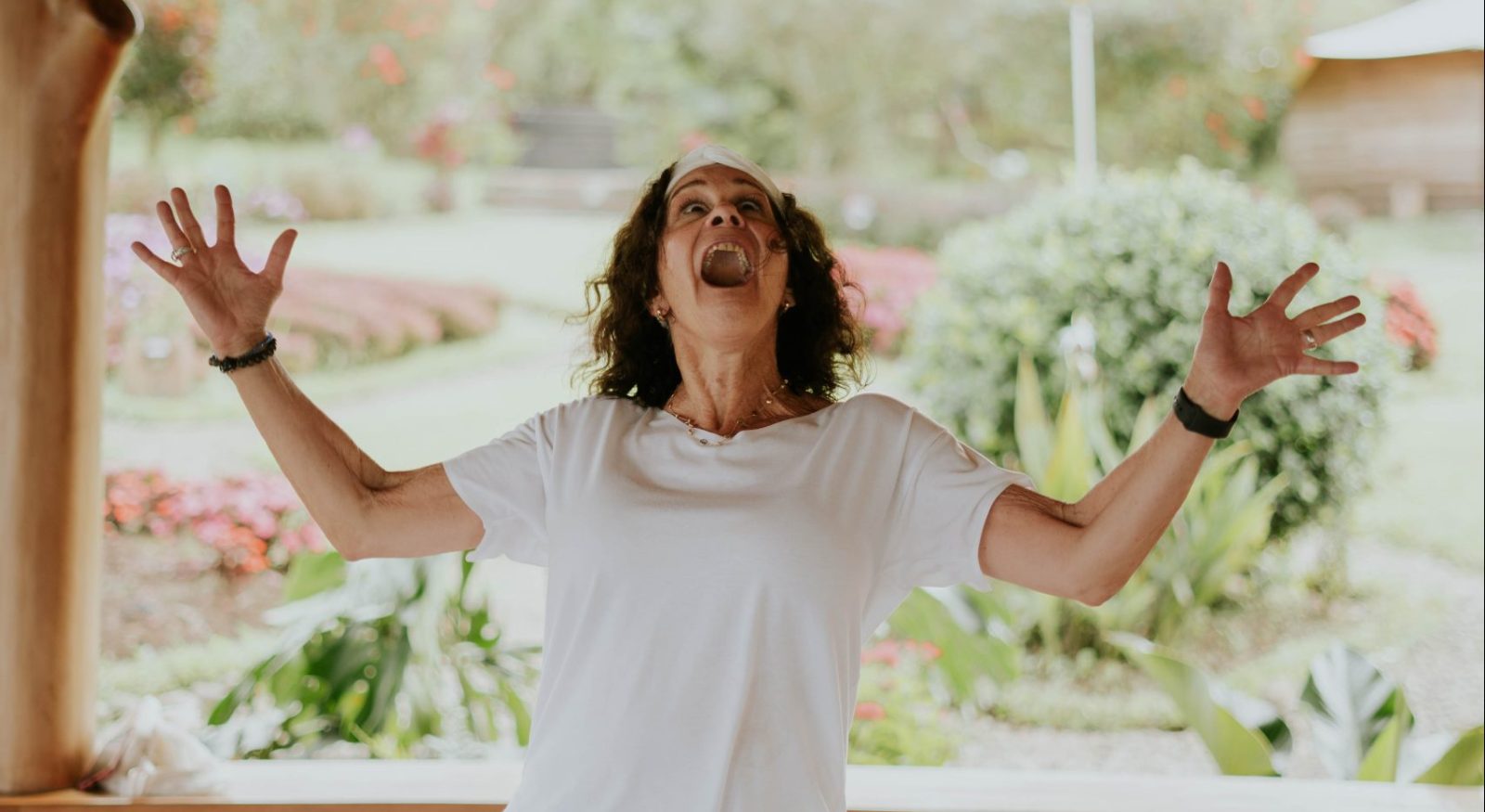Confessions of an ecstatic dancer
It happened quite by accident.
I was in a dark place, consumed by negative thoughts and sustained inertia brought on by the pandemic. Illness had swept me into a new role as a custodial caregiver. A political rift had torn my family apart. My marriage was at stake, and fears of abandonment and loneliness prevailed.
My career had bottomed out, and I had little motivation to find alternative work or to nurture another path. No creative sparks flew, and I harbored self-doubt and feelings of imposter syndrome. I considered my choices and frankly, I could find no joy in anything.
And then, one day, I danced.
Suddenly, a spark ignited. Unabashed joy from letting myself go. As I was flowing and gyrating to the rhythms I realized, this feels good, I NEED to dance!
Not just once a year, at a wedding or special event. Or occasionally, like at a live music venue. I need to dance EVERY DAY.
Yes, I was still practicing yoga regularly. I was swimming once or twice a week, riding my bike, and walking up to four miles daily. All of this helped me sustain a calmer self, yet these rituals only reinforced my solitude.
I started to look for local dance classes to increase my social sphere. I could try ballroom dancing at Arthur Murray, but I’d need a partner, and Marshall was set to deploy overseas. Jazzercize? The thought of joining a class at the senior center was less than rousing. Line dancing is fun, but country music is not really my jam. My search for modern jazz classes reaped offerings for children only.
That’s when I remembered Aliza Rivka
I first met this amazing young woman in Costa Rica in 2019. Aliza was working at Danyasa leading dance therapy sessions when I toured the resort for its retreat potential. She had relocated from New York after 32 years, drawn to a more holistic approach to teaching and living after experiencing an immune system breakdown. Now living and working in Costa Rica, Aliza had found a way to weave her formal training into the fabric of her natural surroundings.
I was so taken with this beauty for her authenticity and genuine approach to following her dreams and remembered we were connected on social media. She had once suggested I attend a 5Rhythms class in NYC, but lethargy surpassed my intrigue, and I never crossed the Hudson to explore these further. I again reached out to her for program suggestions.
As luck would have it (or as the Universe divined) Aliza had spread her wings, becoming a dance “priestess”, leading local exotic dances and weekly offerings online. Her gifts of intuition and guidance melded with her dance and DJ skills, elevating her to a new-earth Shaman. As such, she created her own “Mariposa Movement” platform to share with others. Her once-a-year, nine-month-long “Flight School” was about to embark in March, and I was a perfect candidate.
What is ecstatic dance?
Ecstatic dance is a type of dance that is free-flowing and unstructured. Dancers move to the rhythm of the music and let their bodies express themselves without any restrictions or inhibitions. This can lead to a feeling of trance or ecstasy, as dancers become more and more immersed in the music and their own movements.
In my younger days, we called this free-form dancing, which I readily embraced. I never had a steady partner, nor did I like disco. Almost always, drinks and drugs were the catalyst that set me free. Dancing, albeit fun, was never introspective or healing.
Ecstatic dance events are NOT RAVES
Contemporary ecstatic dance events are SOBER experiences. No drugs or alcohol, your own bliss is the medicine!
Raves are almost always associated with widespread drug use and hedonism, while ecstatic dance culture is often associated with spirituality and wellness.
The effects of ecstatic dance begin with ecstasy itself, which everyone experiences in differing degrees. Often dancers are described as feeling connected to others, and to their own emotions. The dance serves as a form of meditation, helping people to cope with stress and to find serenity.
Other benefits of ecstatic dance include improved mood and enhanced self-esteem; better overall fitness; and augmented creative expression.
Ecstatic dance has been used for centuries in spiritual practices around the world. In shamanism, for example, ecstatic dance and rhythmic drumming are used to alter consciousness and facilitate healing and spiritual experiences. Ecstatic sacred dances are also found in many religious traditions, such as Sufi whirling and the Jewish dance of the seven veils.
In the 1970s, Gabrielle Roth revived ecstatic dance and formalized it in her 5Rhythms practice. This practice involves five different types of dance, each with its own unique rhythm and energy: flowing, staccato, chaos, lyrical, and stillness. The 5Rhythms practice is now found in variants across the western world, and it is a popular way to connect with oneself, others, and the divine.
Coupled with Aliza’s Flight School curriculum (more on this later), it seemed the right time to explore whether I could become an ecstatic dance leader, or at a minimum, a practitioner and ecstatic dance advocate.
My dance history
Growing up I never had any formal dance training. I was a chubby child who always felt self-conscious in a leotard. I enjoyed watching my parents dance together but never learned their moves. Unlike most girls my age who took tap and ballet, pumping the park swings was enough exercise for me.
Later in life, I learned to let go and dance, but I was typically intoxicated. Celebrations and work events were always peppered with drinks and impromptu dances. In public or at home with my family and friends, good times meant drinking and dancing. Milestone events like birthdays and bar mitzvahs, business trips, and family vacations, were my dance platforms.
My fondest memories include:
- Dancing at the Spectrum in Gainesville in the late 70s. Poppers were the prelude to Ecstasy then, followed or coupled with Quaalude consumption and weed.
- More than 40 years ago, when Marshall and I were falling in love, we took our first trip to Key West. Our shared euphoria while dancing to Stevie Wonder’s “Do I Do” is etched in my mind. Wonder’s “Ribbon In the Sky” became our wedding song less than a year later.
- My besties and I had a blast at my 60th birthday reunion at Madison Square Garden, singing along with Billy Joel, then dancing our way to the Stonewall Inn.
- I love a Latin beat, and usually “fake it to make it”. A few years ago, I took salsa classes with my son, Geoff, and his friends. So much fun, but like anything not practiced, easily forgotten. (Geoff subsequently used his natural charm and salsa skills to wow the old ladies at my mother’s retirement village.)
- It was difficult to choose a song for our mother-son dance at Josh’s wedding. I ultimately chose “Always On Your Side” by my faves Sheryl Crow and Sting, but in retrospect, I should’ve chosen “I Hope You Dance“, by Lee Ann Womack.
My dance-capades continue as I look forward to live music events and concerts, weddings, and celebratory gatherings, but they now include a daily dance practice. Ideally, I’ll dance a minimum of 10 minutes, twice a day. Most days, however, I’ll dance only once while prepping dinner, or midday with my newfound butterfly family or Aliza’s Dance Queens.
Three months into my ecstatic dance journey, I can honestly say I’ve reconnected with “joy”. And, since Joy is my given middle name, I’ve decided to incorporate Joy in my online persona. Look for emails and updates from Loretta Joy!
Reach out to me if you want to experience ecstatic dance, or want to learn more.


So interesting -thank you for sharing.